Best Indoor Grow Lights for Vegetables? Here’s Our Top Pick!
Among some of the top grow lamps for vegetables that we’ve picked in our list, I would give the top spot for the best indoor grow light for vegetables to the Dimgogo Triple Chip Full Spectrum Lamp.
It emits extremely strong full spectrum light, thanks to its innovative Triple Chip technology. It also has its own powerful cooling system to prevent overheating. It makes growing vegetables indoors with led lights extremely easy.
Most people who want to grow veggies have probably asked themselves, “do led grow lights work for vegetables?” The answer is definitely a yes, and there is a scientific evidence behind it. In fact, NASA has even used LED lights for growing plants in the outer space.
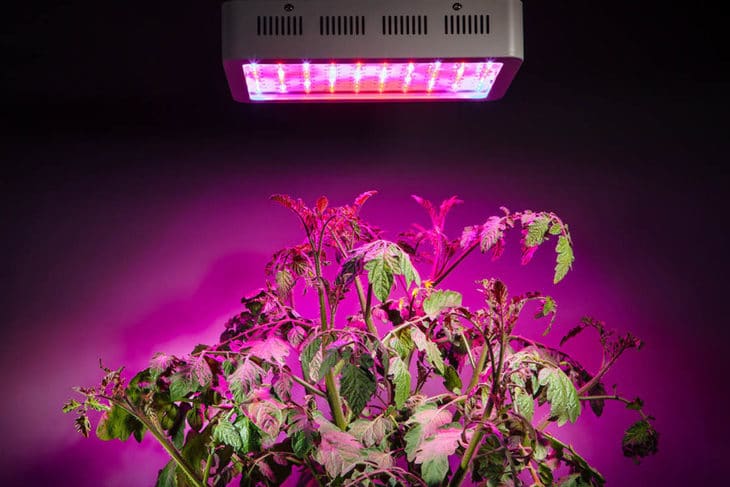
The full spectrum light allows the tomato plant to grow well.
This already goes to show how effective growing vegetable indoors with lights really is. Since there are now many brands readily available, we now have the choice as to which one is the best for our vegetable growing needs. Here, we’ve listed down our favorite choices for the top led grow lights for vegetables and a short guide to picking the one for you.
Quick Comparison: Best Rated Indoor Grow Lights 2018
|
Rating |
Image |
Products |
Score |
Price |
|---|---|---|---|---|
|
1 |
 |
|||
|
2 |
 |
Dimgogo Full Spectrum Grow Lamp (1000W) with Ultraviolet and Infrared Light |
||
|
3 Best |
 |
Dimgogo 3-Chips Full Spectrum Grow Lamp with Ultraviolet and Infrared Light Editor’s Choice |
||
|
4 |
 |
|||
|
5 |
 |
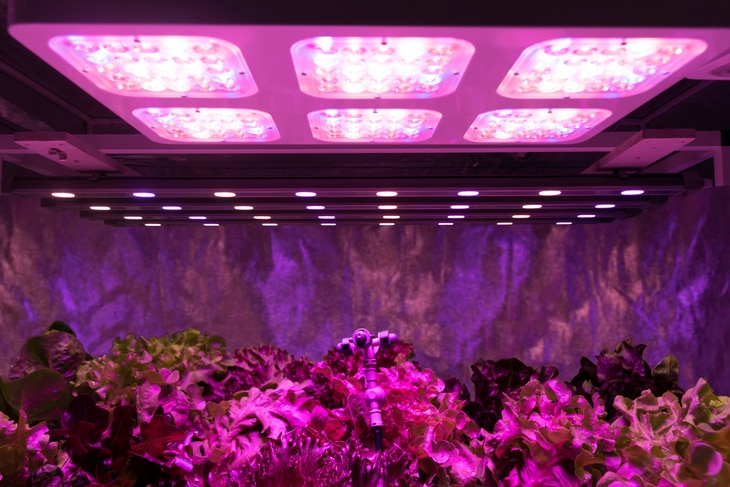
Installing more LED lights enables a wider coverage of plants.
Key Features of the Best Grow Lights for Vegetables
Want to know why Dimgogo Triple Chip Full Spectrum Lamp is our top pick? Check out its key features below:
-
Innovative Triple Chip Technology
This Dimgogo innovation is a one of a kind. This grow light for vegetables is made up 10 watts of Epiled triple chips. The triple chip power makes this one of the best led grow lights for vegetables since it is so powerful. Its intensity and high lumen count makes it especially good and also crowns it as one of the best grow lights for starting vegetables,treating them from their younger stages.
-
Energy Saver Bulbs
Aside from its strength, the bulbs of this light also save energy. In fact, they can save more energy than cfl bulbs for growing vegetables. Roughly, they can consume about 185 watts of power which can save up more than an ordinary MH or HPS lamp can.
-
Dimgogo Cooling System
To ensure that the led lights for growing vegetables don’t overheat, Dimgogo has a specially made cooling system that is made out of two powerful cooling fans and a heat sink for every led light. This allows the lights to keep cool and also not to make any noise. Since it cools the lights regularly, the system facilitates the light to work long hours without damaging itself. This is ideal if you’re using grow lights to start vegetables.
-
High Coverage
Another feature that easily makes it one of the best indoor grow lights for vegetables is its coverage. It is able to cover an area of 5.1ft x 4.7ft at a height of 24 inches. Of course, this can be adjusted if you adjust the height. The intense lighting can reach a wider mass of area if you increase the height. Changing the height has to be done depending on the environment.
Top 5 Best Indoor Grow Lights for Vegetables Reviews
Best grow light for vegetables? We’ve got the five best models below. Check them out!
#1 Full Spectrum Marshydro Reflector 480W LED Grow Light

Full Spectrum Marshydro Reflector 480W LED Grow Light. Via: Amazon.com
Marshydro is known for being one of the best indoor grow lights for vegetables with 8 years of research and engineering development. This growth light has both growth and bloom switch lights for different functions. It also prevents any light from being lost in the process.
Pros
Cons
#2 Dimgogo Full Spectrum Grow Lamp (1000W) with Ultraviolet and Infrared Light

Dimgogo Full Spectrum Grow Lamp (1000W) with Ultraviolet and Infrared Light. Via: Amazon.com
Dimgogo has been a brand that is known for producing some of the best grow lights for vegetables. They specialize in premium led growth lamps ever since 2010. This light emits 1000 watts of power in full spectrum and comes with UV and IR light modes.
Pros
Cons
#3 Dimgogo 3-Chips Full Spectrum Grow Lamp with Ultraviolet and Infrared Light

Dimgogo 3-Chips Full Spectrum Grow Lamp with Ultraviolet and Infrared Light. Via: Amazon.com
The upgraded version of the Dimgogo boasts of a Triple chip 1000 watt grow light, making it one of the best indoor grow lights on the list. It comes with a full spectrum light with high-grade aluminum cooling sinks.
Pros
Cons
#4 LAPUTA 1000W Full Spectrum Growing Lamps

LAPUTA 1000W Full Spectrum Growing Lamps. Via: Amazon.com
The Laputa full-spectrum light can be used for all growth phases of your veggies. This is excellent for greenhouses and also indoor gardens. In fact, it is a good light for commercial growing of vegetables.
Pros
Cons
#5 RAYWAY Plant T5 Tube Light

RAYWAY Plant T5 Tube Light. Via: Amazon.com
Although it isn’t the top 1 best grow lights for vegetables on the list, it has its own unique features. Its small frame makes it very easy to install, and it comes with 5 strips of light bars. It also comes with a set of cables and a plug. It is definitely one of the best grow lights for indoor vegetables.
Pros
Cons
Buying Guide for Vegetable Grow Lights
With all the really great brands out there, which one do you pick? Since all brands have different features and are built differently, then they work for everyone differently too. That means that you have to pick the one that works best for you. How do you determine that? You’ll need to have a buying guide that can help you pick out the best one. This short buying guide will give you the criteria on which one would best suit your needs.
So, the next time you shop the best indoor grow lights for vegetables in your garden, take into account these factors first:
-
Type
The first thing that you have to take note of is the blub type of the light. Generally, there are two types of bulbs to choose from, namely the Metal Halide and the High Pressure Sodium type. The MH types emit strong blue light that’s good for growing leafy vegetables. The HPS types, on the other hand, are the high powered types that are good for growing many different kinds of veggies in the long term.
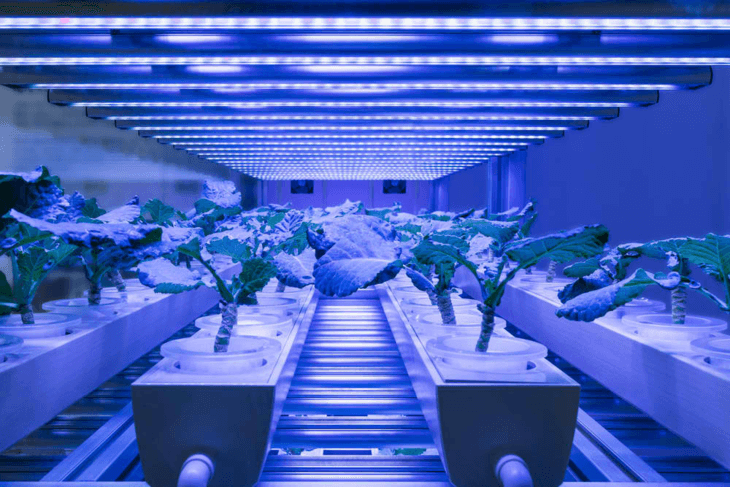
HPS lights are very effective in properly growing plants.
The type of light that you’d want depends on the kind of vegetables you want to grow. Leafy vegetables need the light of an MH type and HPS types are used for bigger and more variety vegetables.
Although these are the traditional types, the LED light has also made its way in the market as one of the most effective for growing plants. The LED lights are known for high intensity and power which will be discussed below.
-
Intensity
One of the most important things to take into consideration when you grow vegetables indoors under lights is the intensity or how much light is given to the plants. This can be measured through luminous flux or simply lumen. If the light is more powerful and more intense, then it means there are more lumens present in the light. The amount of lumens you’ll need for your light depends on what type of vegetable you want to grow. Some vegetables require more intense light than the others. For this, you’ll need to do some research. You can use lumens as your unit of measurement to determine intensity.
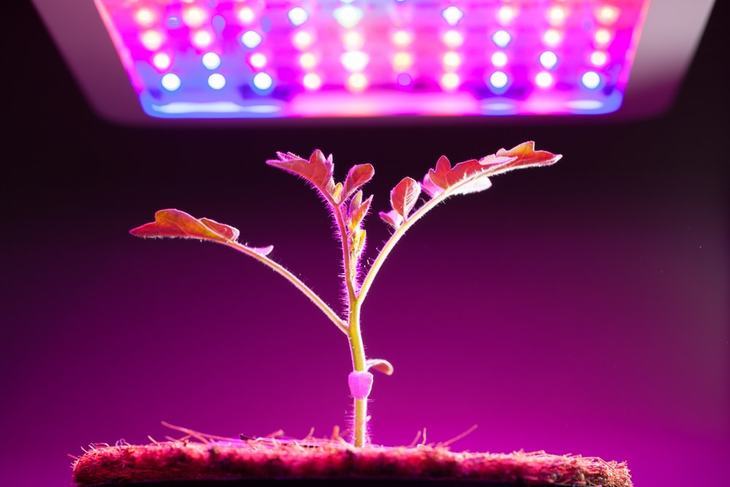
-
Duration
You must also determine the duration of the light, which refers to how long the light can hold up. There are vegetables that require up to 18 hours of sunlight, which means that you need to keep the light on for a long period of time. It also pays to get one that can last long hours. You may also want to get one with an automatic timer so that the plant won’t get more light than it actually needs.
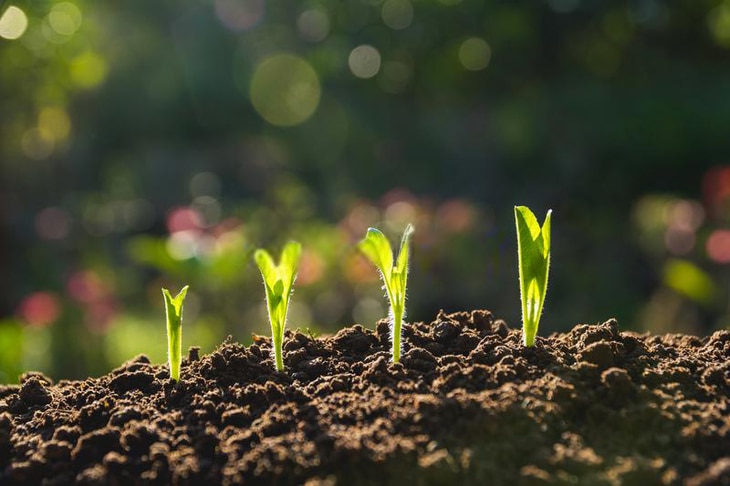
Consistent exposure to sunlight is good for growing seedlings.
-
Spectrum
A very important thing that you have to consider is the spectrum or color of light. There are full spectrum bulbs that can copy over 90% of the entire color spectrum. This gives the growing process more efficiency. In fact, a standard full spectrum bulb is best for growing the small seedlings. If your veggies need a stronger light, there are other full spectrum bulb types available.
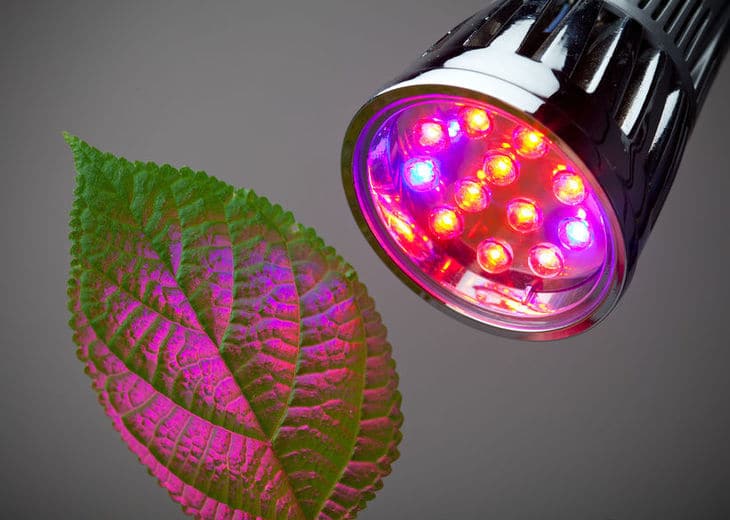
Full spectrum lights from LED grow lights replicate actual sunlight for the growth of plants.
-
Wattage
One more thing that you have to take into consideration is the wattage of the light. With regard to the wattage, you can actually calculate how many watts you’ll need. Basically, all vegetables have a different watt requirement per stage in their growing process. You can check available charts to see which vegetable needs how many watts. When you buy lighting, you have to consider the wattage of the entire plantation. So in order to get the total of watts needed, you need to multiply the watts needed for an individual plant to the square foot of the plantation.
-
Brand
The last thing that you have to take into consideration is the brand of the light you’ll want to buy. If you want the best indoor grow lights for vegetables, then it is recommended that you pick the more well-known brands since these are the ones that have proven and tested by many.
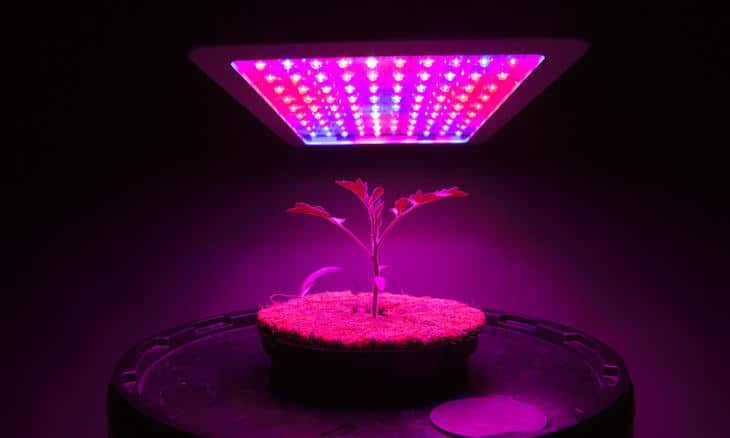
Depending on the plant, the LED light sometimes needs to be put close to the plants for optimum exposure.
Conclusion
With our short buying guide and review, we hope we are able to help you choose the best indoor grow lights for vegetables. This way, you’ll be able to grow a beautiful indoor vegetable garden in your home. Although growing vegetables indoors under lights are efficient, you have to know how to use grow lights for vegetables and how to choose the right one for you. Hopefully, this buying guide will help give you an idea of which brand to get.
Thanks for reading and don’t forget to share with your friends!:)
Pin it!

best grow lights for vegetables pin it
